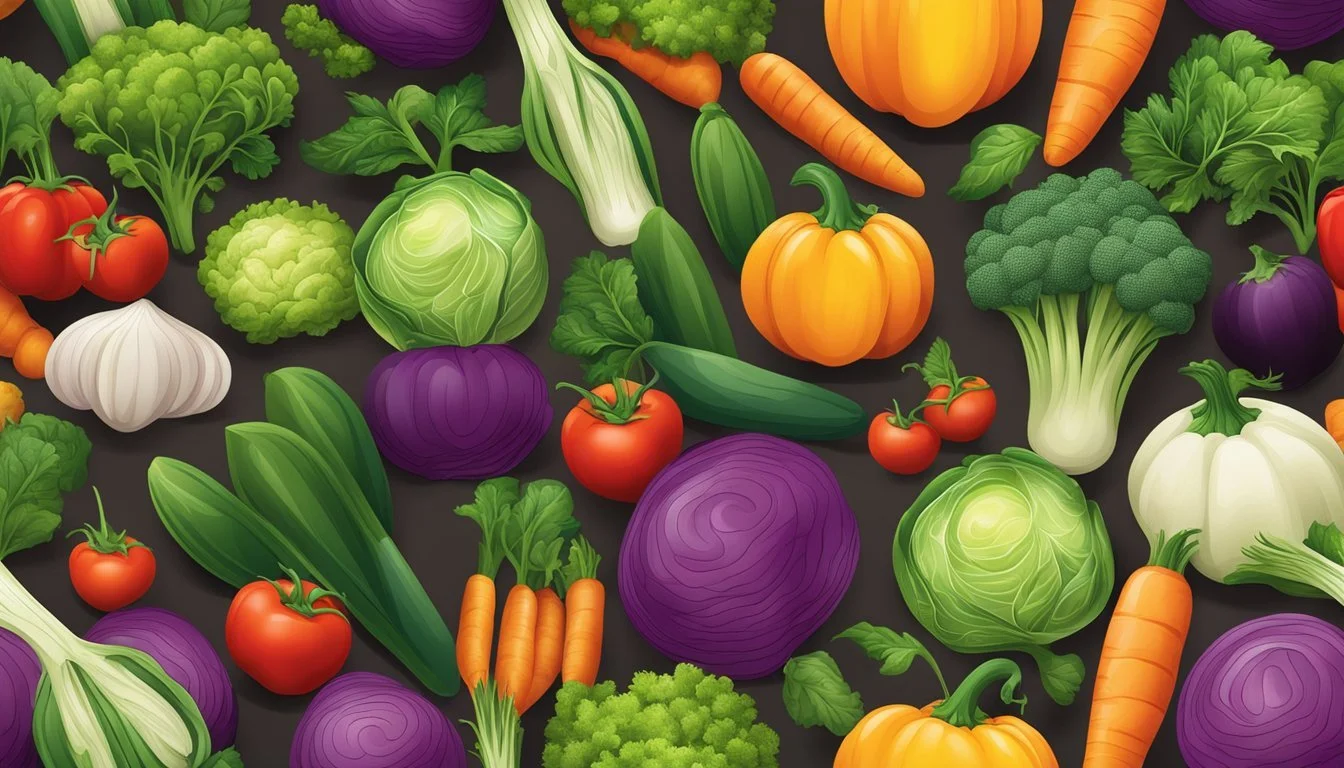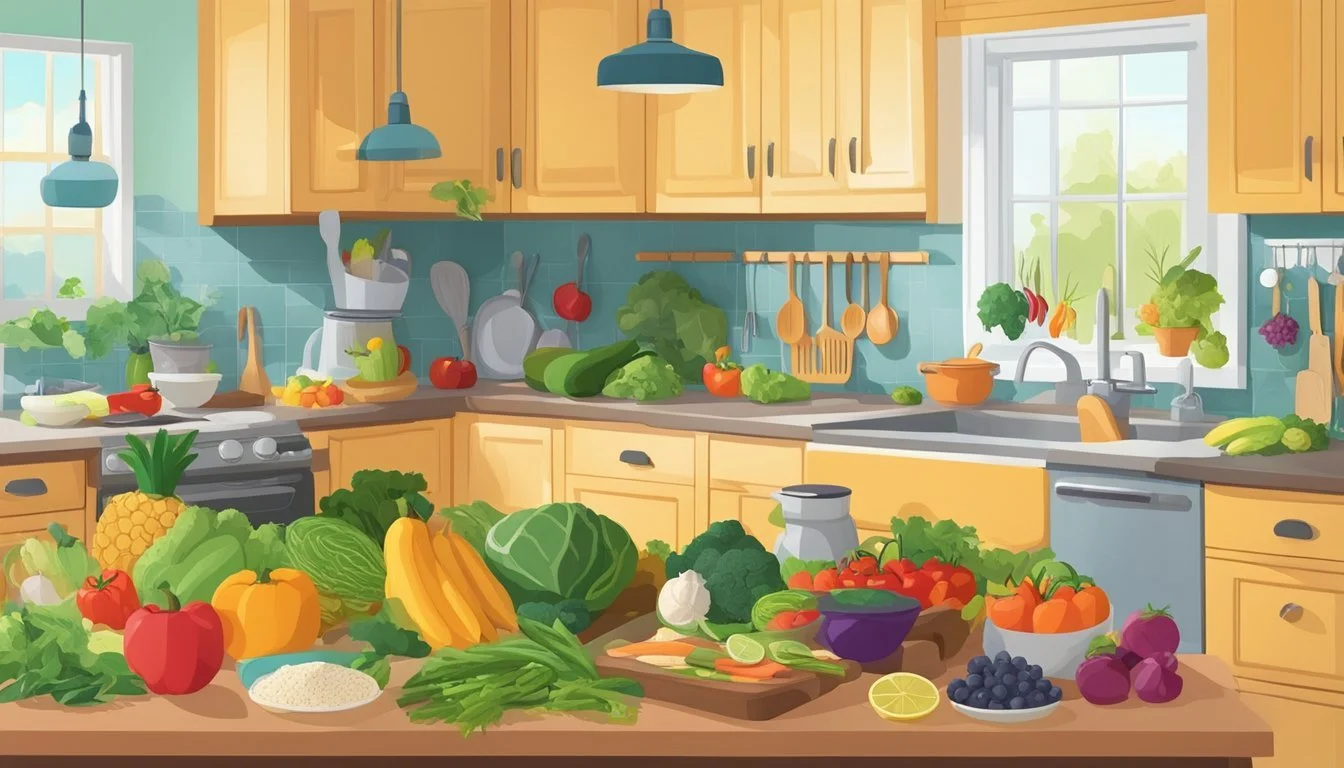How to Make Paleo Dieting Fun for the Whole Family
Engaging Tips for Delicious Lifestyle Changes
Adopting a paleo diet often hinges on the principle of returning to the eating habits of our ancestors, focusing on consuming whole, unprocessed foods. This framework prioritizes meats, vegetables, fruits, nuts, and seeds while eliminating grains, dairy, and refined sugars. The challenge for many families is to make this dietary transition enjoyable and sustainable, especially for younger family members accustomed to traditional Western diets. Transforming the paleo diet into a fun, family-friendly pursuit involves creativity and a focus on the vibrant flavors and versatility of whole foods.
In making paleo dining a delightful experience, the key is to introduce a variety of dishes that are both nutritious and appealing to all ages. For example, the concept of food served in 'boats', such as chicken enchiladas (What wine goes well with chicken enchiladas?) in a squash vessel, offers a playful twist to the meal, potentially increasing its appeal. Coupling clean eating with fun presentation can encourage children to explore new tastes and textures, turning mealtime into an adventure rather than a chore.
Family involvement in meal preparation can further enhance the enjoyment of a paleo lifestyle. Engaging children in the kitchen not only makes them feel included, but it also provides an opportunity to educate them about the benefits of clean eating with real food. By providing family-friendly paleo recipes that are easy to prepare and packed with flavor, families can work together to create delicious dishes that steer their collective health and wellbeing in a positive direction.
Understanding the Paleo Diet
The Paleo diet, often referred to as the caveman diet, encourages consumption of whole, unprocessed foods that our Paleolithic ancestors might have eaten. It's a dietary plan that focuses on foods that are high in protein and low in carbohydrates.
Key Components of the Paleo Diet:
Protein: This includes lean meats, fish, and eggs.
Vegetables and Fruits: A variety of these are central to the Paleo diet.
Healthy Fats: Nuts, seeds, avocado, and olive oil are encouraged.
Foods to Avoid:
Grains: This includes wheat, rye, rice, and barley.
Dairy: Milk, cheese, yogurt, and butter are typically excluded.
Refined Sugar: All forms of processed sugar are to be avoided.
Processed Foods: Any food that is processed or contains artificial additives is not Paleo-friendly.
The Paleo diet shares some similarities with the Whole30 program, which is a 30-day diet that emphasizes whole foods and the elimination of grains, dairy, and sugar; however, they differ in duration and specific restrictions.
Adopting the Paleo diet can be enjoyable for families when they focus on the abundance of foods they can eat rather than those they cannot. Exploring new recipes that incorporate a variety of meats, vegetables, and healthy fats can make this dietary shift not only healthy but also exciting and palatable for all ages.
Planning Paleo Meals for the Family
Planning paleo meals that appeal to the whole family requires a strategic approach that incorporates nutrient-dense ingredients into recipes everyone will enjoy. A careful balance between variety and taste will ensure meals are satisfying and healthful.
Developing a Weekly Meal Plan
One begins the week by mapping out a meal plan, which includes a variety of proteins, vegetables, and fruits to cover all nutritional bases. Shopping lists should be generated from this plan to streamline grocery shopping, making sure to include ingredients for both main dishes and sides. Utilizing a meal plan template can simplify the process, ensuring that families have a clear guide to follow throughout the week.
Paleo-Friendly Breakfast Ideas
Breakfasts can be both simple and exciting; starting the day with dishes like Bacon and Egg Cups or a Paleo Smoothie Bowl ensures a high-energy start. It’s beneficial to prep components like hard-boiled eggs or cut fruits (how long do cut fruits last?) in advance for efficiency. For weekend brunches, a larger effort can be made with recipes like a Sweet Potato Hash.
Satisfying Paleo Lunches
Lunches should be just as enticing, with options like Chicken Avocado Salad or Zucchini (What wine goes well with zucchini?) Noodle Bowls. For children, Paleo Wraps with a variety of fillings keep lunches interesting. Prepping ingredients in advance, such as cooking a batch of chicken to be used in several recipes, aids in sticking to the paleo meal plan throughout the week.
Dinner Delights
Dinners (What wine goes well with dinner?) are the perfect time to explore heartier fare, such as Creamy Tuscan Chicken or a nourishing Beef and Vegetable Stew. One can get creative with dinner recipes like Paleo Taco Casserole using sweet potato as a base— a family-friendly twist on traditional tacos. Ensuring dinners are diverse, utilize different cooking methods like slow cooking or air frying for varying textures and flavors.
Cooking Techniques and Tips
Adopting the Paleo diet can transform family meal times into exciting culinary adventures. Embrace strategies to cook efficiently, enhance flavors with spices, and master paleo baking basics to make dieting enjoyable for the whole family.
Efficient Cooking Strategies
A Paleo kitchen demands foresight and organization. Meal prepping at the start of the week ensures ingredients are ready for quick assembly. Utilizing methods like batch cooking can save time; cook once and eat twice by making enough to have leftovers. Encourage the family to participate in preparation—kids may enjoy spiralizing vegetables, while adults can focus on portioning out meats.
Meal Prepping: chop veggies, portion meats, prepare spice mixes.
Batch Cooking: double the recipes, store for future meals.
Using Spices for Enhanced Flavor
Spices are the backbone of flavorful paleo cooking. Instead of relying on processed flavorings, making a homemade spice blend can be a game-changer. Start with classic spices like salt and pepper, and incorporate garlic powder, paprika, and onion powder for added depth. Store these blends in airtight containers to keep them fresh and within arm's reach while cooking.
Homemade Paleo Spice Mix:
2 tbsp salt
1 tbsp pepper
1 tbsp garlic powder
1 tbsp onion powder
1 tbsp paprika
Mix and store in an airtight container.
Paleo Baking Basics
Baking on a paleo diet doesn't have to be daunting. The key is to have the right substitutes for traditional ingredients. Almond flour and coconut flour often replace grain-based flours. They provide a nutritious base and subtle flavors that complement various recipes. Remember that coconut flour is highly absorbent, so it's used in smaller quantities compared to almond flour.
1 cup wheat flour = 1/4 cup coconut flour
1 cup wheat flour = 1 cup almond flour
Adjusting liquid ratios may be necessary when substituting flours. Experiment to find the perfect balance for each recipe.
Quick and Easy Paleo Recipes
Transforming paleo dieting into a delightful experience for the entire family hinges on having a repertoire of dishes that are both rapid to prepare and delicious. These paleo-friendly recipes cater to the bustling weekday schedules without compromising on taste, ensuring that every member of the family can indulge in nutritious meals.
30-Minute Paleo Meals
Speed is of the essence for families on the go. Paleo Egg Roll in a Bowl with Chicken turns a favorite takeout dish into a healthy, 30-minute creation featuring cabbage and carrots wrapped in savory flavors. Similarly, Salmon BLT Salad with Chive Ranch Dressing combines the heartiness of bacon with the lightness of salmon, creating a full meal that comes together in less than half an hour.
Slow Cooker Specialties
The slow cooker is an invaluable ally in the paleo kitchen. It allows for the slow and low preparation of dishes like Lemon Chicken Piccata, where chicken is bathed in a tangy lemon and caper sauce, developing depth of flavor over hours. Additionally, one can prepare Beef Stir Fry with Veggies by tossing ingredients into the slow cooker in the morning for a ready-to-eat feast by dinner.
One-Pan Paleo Wonders
One-pan meals simplify the cooking process while fostering bold flavors. A must-try is the Sheet Pan Chicken with Roasted Vegetables, (What wine goes well with roasted vegetables?) which offers a balanced meal with minimal cleanup. Paleo pancakes, a versatile option, can be cooked swiftly in a single pan, allowing for customization with various paleo-friendly toppings, ensuring breakfast doesn't become a monotonous affair.
Making Veggies the Star
Vegetables can be transformed into exciting and enjoyable elements of a meal that can appeal to all family members. Highlighting their natural flavors and incorporating creativity in preparation are key.
Innovative Vegetable Sides
One can elevate the status of vegetables from mere accompaniments to centerpieces of a meal with a little inventiveness. For instance, butternut squash (how long does butternut squash last?) can be diced and roasted with a drizzle of olive oil and a sprinkle of fresh herbs (how long do fresh herbs last?) to create a side dish that is both healthy and flavorful. Another option is to stuff cherry tomatoes with a mixture of olives, garlic, and herbs, serving them as a delightful bite-sized surprise.
Salads and Greens
Salads need not be a dull assortment of greens; they can be vibrant and full of texture. Combining leafy vegetables with a variety of colors and shapes, like spiralized zucchini or shaved butternut squash, can make for a visually appealing and nutritious dish. One may dress them with a homemade vinaigrette or add seeds and nuts for a crunchy contrast.
Turning Veggies into Comfort Food
Transform traditional comfort foods into paleo-friendly versions by using vegetables as substitutes for grains and legumes. For example, create a zucchini carbonara by replacing pasta with spiralized zucchini, adding a creamy sauce made from egg yolks and seasoning. Another comforting option is a cauliflower (how long does cauliflower last?)-based pizza crust that can be topped with a variety of sauces and paleo-friendly toppings.
The Fun of Cooking With Kids
Introducing children to cooking paleo-friendly snacks and meals doesn't just provide them with nourishing food options but also fosters creativity in the kitchen. By involving them in the cooking process, they learn to appreciate fresh, whole foods while having fun.
Kid-Friendly Paleo Snacks
Strawberries & Cream Collagen Shake: A blend of fresh strawberries, coconut milk, and a scoop of collagen powder offers a creamy, protein-rich treat for kids.
Chocolate Chip Pancake Bites: Small, fluffy pancakes with dark chocolate chips make for a perfect grab-and-go snack that's both healthy and satisfying.
Portable Paleo Popsicles: Mixtures of blended fruits frozen in popsicle molds provide a refreshing snack on hot days, without any added sugars.
Carrot Breakfast Cookies: Carrot and nut flour cookies are a convenient and tasty way to start the day or as an after-school treat.
Creating these snacks allows kids to take part in choosing their favorite fruits or flavors, and seeing their handiwork turn into delicious, paleo-friendly snacks.
Teaching Kids to Cook Paleo
They say the paleo diet is restrictive, but teaching children to cook paleo opens up a world of diverse ingredients and simple yet hearty recipes.
Breakfast Egg Muffins: Combining eggs with diced vegetables and baking them in muffin tins teaches kids about portion control and introduces them to a variety of veggies.
Collagen-Boosted Meats: Children can learn about the importance of protein as they help to prepare meat dishes boosted with collagen for an extra nutrient punch.
Almond Flour Pizza Crust: A chance to roll out their pizza dough and choose their toppings not only makes cooking fun but also aligns with paleo principles, swapping out traditional flours for almond or coconut flour.
By guiding them through the process of making meals such as simple grilled meats with herb garnishes or vegetable stir-fries, children learn how to create paleo-friendly recipes that are as enjoyable to make as they are to eat.
Creative Alternatives to Favorite Dishes
Introducing imaginative grain-free and low-carb options can transform the Paleo dieting experience for the entire family. From substituting traditional staples with innovative Paleo-friendly ingredients to exploring diverse cuisines in a healthful way, these adaptations ensure that meals remain exciting and satisfying.
Paleo Swaps for Traditional Favorites
Zucchini Noodles ("Zoodles") provide an excellent foundation for sauces and toppings. For example, Spaghetti Squash Bolognese replaces wheat pasta with nutritious spaghetti squash, topped with a rich, meaty tomato sauce.
Cauliflower is a versatile substitute in Loaded Bacon Burger Bowls or Mexican Cauliflower Fried Rice, offering a satisfying texture while keeping the dish low in carbs.
Inventive Uses for Cauliflower Rice
Cauliflower rice takes center stage as a paleo-friendly, low-carb grain alternative that can be seasoned and adapted for a variety of dishes.
Shrimp Fried Cauliflower Rice: Combines seafood with the satisfying feel of fried rice, seasoned with a hint of soy sauce alternative for authentic flavor.
A twist to the popular dish, Burrito Bowls with Cauliflower Rice make for a fulfilling, keto-friendly meal, including seasoned meat and fresh vegetables.
Healthy Versions of International Cuisines
Exploring international flavors with Paleo adaptations can introduce variety into the dieting routine.
Egg Roll in a Bowl with Chicken: This deconstructed version of an egg roll, relying on chicken and coleslaw mix, eliminates the need for a deep-fried wrapper.
Transform traditional Greek dishes into Low Carb Gyro Bowls, layering seasoned meat over a bed of mixed greens with homemade Tzatziki.
Scallops (What wine goes well with scallops?) with Lemon “Butter” Sauce and Herbed Cauliflower Rice showcase how seafood and herbs can create a gourmet Paleo dish that's both flavorful and low carb.
Integrating Seafood and Poultry
Incorporating seafood and poultry into a Paleo diet can offer a multitude of delicious choices for the whole family, featuring fresh ingredients and a variety of flavors. By exploring recipes for fish, shellfish, (What wine goes well with shellfish?) and poultry, individuals can enjoy satisfying meals that are both nutritionally rich and in line with Paleo eating principles.
Fish and Shellfish in Paleo Cooking
Fish and shellfish are cornerstones of a Paleo diet due to their high protein content and healthy fatty acids. One can craft dishes that appeal to all ages by selecting from the ocean's bounty, including shrimp, crab, and squid. For instance, seafood paleo recipes often incorporate vibrant vegetables and seasonings to create balanced meals.
Seafood Recipe Ideas:
Shrimp: Season with sea salt and black pepper, and sauté in a skillet with ghee or olive oil. Add sun-dried tomatoes and fresh baby spinach for a succulent Tuscan Garlic Shrimp dish.
Squid: Grill for a smoky flavor or slice into rings and fry in a Paleo-friendly coating for an alternative to traditional calamari.
Utilizing various herbs and seasonings such as Italian spice blends can transform these ingredients into mouthwatering meals that also adhere to Paleo dietary guidelines.
Poultry-Based Paleo Recipes
Poultry provides a versatile protein that can be the star of numerous Paleo recipes. From grilled chicken breasts to slow-cooked turkey, these meats can be the base for a wide array of dishes that the whole family will find enticing.
Poultry Recipe Example:
Creamy Tuscan Chicken: Prepare by seasoning chicken with Italian herbs, then cooking until golden. One can then mix in a Paleo-approved creamy sauce, perhaps a coconut cream base, combined with garlic, and a variety of vegetables like spinach and artichokes (What wine goes well with artichokes?) for a luxurious and comforting meal.
When planning meals, using fresh ingredients is key. Poultry can be enhanced with fresh herbs such as parsley and complemented with sides like roasted vegetables or cauliflower rice to maintain a Paleo-friendly approach.
Sourcing and Selecting Quality Ingredients
When embarking on a Paleo diet, selecting high-quality ingredients is crucial to ensure meals are nutritious and enjoyable for the entire family. Here are some tips for sourcing and selecting the best ingredients.
Meat: Seek out grass-fed and pasture-raised options for beef, poultry, and pork. These meats are typically richer in omega-3 fatty acids and lower in additives. Organic and local sources can provide fresh choices that support ethical farming practices.
Eggs: Always look for free-range or organic eggs. These eggs come from chickens with better living conditions and diets, which may lead to a higher nutrient profile, including vitamins A, E, and D.
Vegetables and Fruits: Opt for local and organic produce whenever possible. These items are often fresher, containing more nutrients and flavor. Farmer's markets and community-supported agriculture (CSA) are good places to find fresh ingredients.
Real Food Staples: Embrace ingredients in their unprocessed form. Real foods do not have a label and include options like nuts, seeds, and a variety of vegetables and fruits.
Sourcing Guidelines:
Food Category Sourcing Tips Meat Grass-fed, pasture-raised, organic Eggs Free-range, organic Produce Local, seasonal, organic
By carefully selecting these ingredients, families can enjoy wholesome, flavorful meals while adhering to Paleo principles. Remember, the key to making the Paleo diet fun and sustainable for the whole family is variety and quality in meal components.
Maintaining a Clean and Organized Kitchen
An organized kitchen streamlines meal preparation and creates an inviting atmosphere that makes paleo dieting enjoyable for the whole family. The following strategies ensure efficient food prep and establish regular cleaning rituals that are fundamental for maintaining a clean and tidy kitchen space.
Tips for Efficient Food Prep
Designate Prep Stations: Assign specific areas for different tasks such as chopping vegetables or marinating proteins. A well-organized station prevents cross-contamination and saves time.
Pre-Season Batches: Prepare and store batches of commonly used paleo spices and seasonings for quick and easy access during cooking, especially when frying or grilling clean food.
Regular Kitchen Cleaning Habits
Daily Maintenance: Wipe down all surfaces, including countertops and stove tops, after each use to prevent the buildup of grease and food residues.
Weekly Deep Clean: Set aside time each week to perform a more thorough cleaning routine, covering areas like the refrigerator and any pantry spaces. This routine helps reduce clutter and maintains a sanitary environment for storing clean, paleo-friendly foods.
By implementing these systems, a household can enjoy a well-maintained kitchen that supports the paleo lifestyle, making it simpler and more appealing for the entire family.
Staying Motivated and Inspired
Maintaining enthusiasm for a Paleo diet within a family setting hinges on support, variety, and shared objectives. These elements keep the journey nourishing and enjoyable for everyone involved.
Building a Paleo Community
Families flourish with support, and building a community around the Paleo lifestyle can reinforce motivation. They can join local Paleo diet meetups or create a social media group to connect with like-minded individuals. These communities offer a platform to exchange experiences, troubleshoot challenges, and provide encouragement. It's vital to have others who share your dietary lifestyle and with whom you can celebrate triumphs and navigate hurdles.
Using Resources for New Recipe Ideas
Creativity in the kitchen is essential for a sustained Paleo lifestyle. Families should regularly seek out new recipes to prevent mealtime monotony. Using cookbooks dedicated to Paleo diets or visiting reputable websites for fresh ideas can introduce a wide array of dishes to the family’s rotation. Exploring different uses for Paleo staples, like shredded coconut, can keep meals both interesting and nourishing. Here are some ideas for incorporating shredded coconut:
Breakfast: Add to smoothies or sprinkle on top of Paleo-friendly yogurt alternatives.
Dinner: Use shredded coconut as a coating for chicken or fish to add a crunchy texture.
Setting and Sharing Family Goals
Regularly setting and sharing nutritional goals can help families stay on track with their Paleo diet. These goals should be specific and achievable, such as incorporating two new vegetable dishes each week or hosting a Paleo dinner party once a month. They can celebrate together when they reach these goals, which reinforces positive behavior and commitment to their dietary choices. Tracking progress as a family unit solidifies the journey as a collective experience rather than an individual endeavor.









